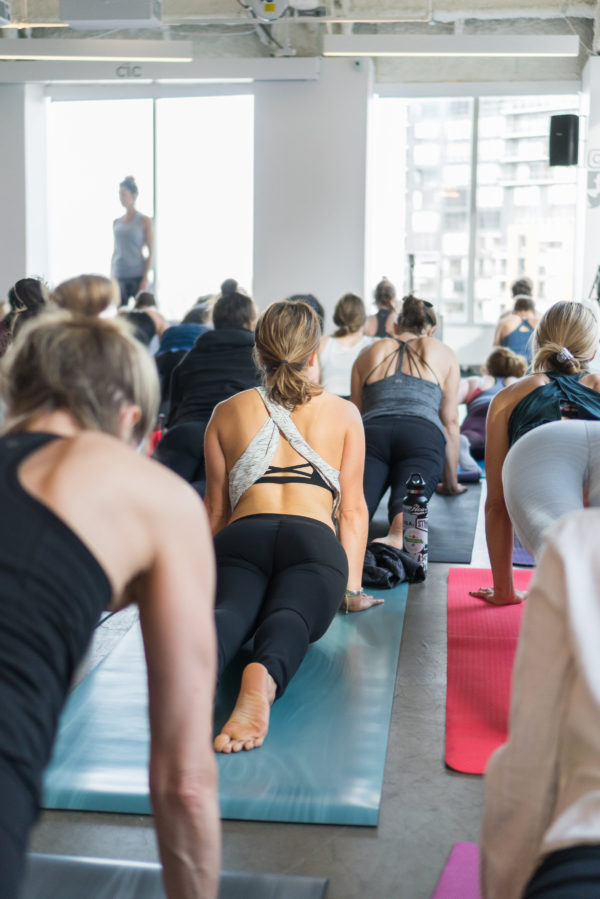
I got an email recently from a yoga teacher and she asked: “What can you do if you cue and cue alignment in your yoga teaching and you still see improper alignment in students?” This begs the question, “How can you shift your teaching when the cues don’t seem to be working?”
I can so relate to this! As yoga teachers, we all share a desire to help our students “get it right” and by the same token, we recognize that each student’s expression of the pose will be unique to them. But does recognizing that there is individual expression mean as a teacher you just close your eyes to what’s happening in front of you? Of course not.
I can also add that as a teacher who focuses primarily on anatomy, the potential to overdo cueing is high. Because I love to break things down into the parts of the pose and then roll it all up into the practical application, I’m always watching for my own tendency to stay too long in one pose or give too many cues.
Let’s take a look at a few ideas around this theme:
We all learn differently when it comes to yoga practice. Some learn better through verbal cues, hands on assisting or watching the teacher demonstrate. As a teacher, we can switch up the presentation of the pose if we notice that a number of students are struggling.
Pick the 3 key aspects you want to emphasize and throw the rest away. My first teacher, Baron Baptiste, talked about this in my first training in 2002 and it’s so true. People come to class with their brains in overload. If we give them too much to manage, they’ll shut down. Pick the key actions, no more than 3, and present those.
Say it once, say it twice but after that, move on. If you cue the action twice (changing it up the second time) and you’re still not seeing the desired action in the class or a few people, move on. For whatever reason, it’s just not processing on their end. To continue to harp on it will just frustrate you and the class.
Develop an ability to distinguish between alignment that is off and alignment that’s unsafe. Ultimately, as teachers, we’re looking for the outlier actions; the shapes and movements that could put the student at risk. Things like locked knees, cranking the neck, dropping the head in Low Push Up or the student sitting in their hips in a low lunge all stand out to me. While we’ll never know the degree of risk for that particular student, things we might consider a red flag should be addressed. These are things that respond well and quickly to a hands on assist (if you and the student are comfortable with that).
Use questions in your cues to raise student awareness. Let’s say you have a number of students who are letting their head drop in Low Push Up. This is common as the neck is pretty flexible and the shoulders are often lacking strength. Also, depending on the cues provided, students may not be aware of the need to keep the head steady as they lower down. Instead of cueing, “Keep the head steady as you lower” you could say, “Is your head dropping as you move into Low Push Up? If so, try to keep the head steady as your PRESS into the floor on the way down.”
If you see similar alignment issues in a number of students, pick the biggest one, stop the class and do a quick demo. This one should not be used a lot because it breaks the flow. I often use it to show the transition from High to Low Push Up. Sometimes though, I start class with a discussion about something I’ve seen a lot that’s incorrect. The other day, I talked about moving too low in Low Push Up; one day I talked about how to use blocks correctly to help open the shoulders in Side Angle and Twisting Crescent Lunge. Sometimes this does the trick because you have their attention, you speak to their minds and then let them feel it in their body.
The last thing to remember is that yoga is an imperfect art. You know this of course, but it bears repeating. Our students all are built differently, process things differently, are fueled by different motivations that color how they approach each pose. Our mindset as teachers also impacts how we teach; if we’re a perfectionist, guess what? We’re going to be a little more of a stickler in the classroom. If we’re super laid back? Not so much. We have to be willing to ask ourselves the question: “How much does what we’re looking for really matter?” That’s why I added the part about looking for red flags. These are things that take a higher priority to be addressed than other things.
If you live in Boston or near Boston and you’d be interested in attending special classes and workshops I’ll be holding where the focus is learning anatomy, join my Boston Based Anatomy Workgroup on Facebook here.
If you’re not close to Boston but love to chat about anatomy, join my Bare Bones Yoga Anatomy Workgroup on Facebook here.Â
If you’re looking for ways to learn cues for the poses, take my Learn Yoga Challenge. It’s a free video series that breaks down the key postures. You can download the guide here.Â
So, what questions do YOU have about teaching that I can make the focus of my next blog post? Let me know in the comments below.
Thanks for reading!
